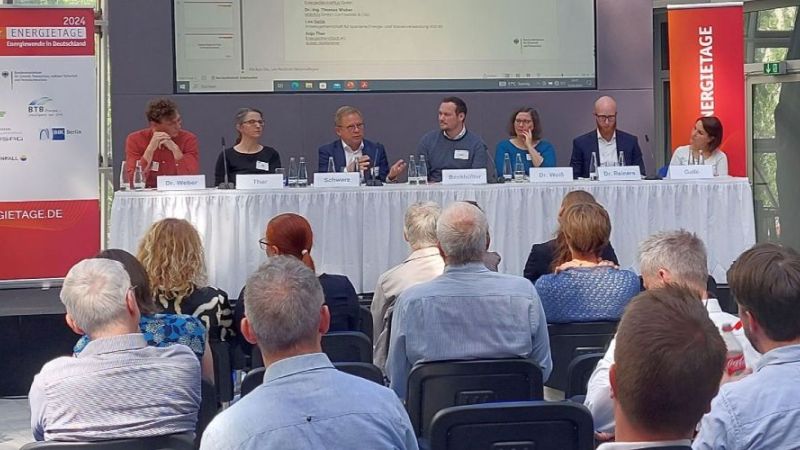 © lovelyday12 – stock.adobe.com
© lovelyday12 – stock.adobe.com
Photovoltaics
Powerful inverters for photovoltaic systems
Teams of scientists from industry and research are developing and testing new semiconductors based on gallium nitride for the next generation of efficient and cost-effective photovoltaic inverters.
The electricity generation costs for photovoltaics are already often lower than those of coal and gas-fired power plants. Nevertheless, the technology is still subject to high price pressure. This also applies to inverters as essential elements of the plants. At the same time, the demands on functional diversity are increasing. For example, technical solutions are needed so that photovoltaic systems can actively contribute to stabilising the grid and at the same time feed the electricity generated into the European interconnected power system. In addition, they need to be suitable for large installations on industrial roofs and open spaces as well as for photovoltaic power plants.
In the GaN-HighPower research partnership, teams of scientists are developing high-performance power converters based on gallium nitride semiconductors (GaN) for the first time. Their aim is to produce cost-effective, resource-saving and powerful devices. They focus on so-called string inverters for outputs from 100 kilowatts. These convert solar power from a string of photovoltaic modules connected in series into alternating current. This helps to keep losses as low as possible, since - depending on temperature, irradiance and shading - modules from different strings deliver different outputs.
Gallium nitride semiconductors for fast switching inverters
At present, industry is already using GaN semiconductors for smaller output ranges, for example for power supply units for mobile phones or laptops (output around 10 - 200 watts) or in the first prototypes in the automotive sector (output around 1 - 10 kilowatts). Fast switching processes and high frequencies are desired here, which GaN semiconductors already enable compared to silicon carbide (SiC) technology (around 70 kilohertz) and classic silicon (Si) components (around 10 to 20 kilohertz). The advantage of high switching frequencies are smaller magnetic components of the inverter, such as inductors, which are used to correct the sinusoidal waveform. This saves weight and cooling output.
In the GaN-HighPower collaboration, the researchers are targeting switching frequencies from 140 kilohertz with simultaneous high output of more than 100 kilowatts. This is the central challenge of the project. Further research is being carried out on the magnetic components of the inverters, which are being designed as coupled inductors so that in future they will be more compact and have lower losses than the components currently used. This reduces the weight, size and cost of the equipment.
The teams of scientists are also developing current sensors that reliably detect current even in the high frequency range and are researching new control electronics for the semiconductors. In addition, it is necessary to clarify how the new components can be integrated into the overall system of an inverter and what requirements arise from combining high outputs with high switching frequencies.
Testing new technologies in the demonstrator
The researchers then perform a final test of the developed components in a technology demonstrator. Here, they check the components with regard to functionality, raw material consumption, weight and costs in order to further optimise the overall system. For example, lightweight inverters are easier to install, as there is no need for a machine, which is an important aspect in practice. In addition, raw materials for case, heat sink and inductive components can be saved, which ultimately also reduces costs. (mm)










